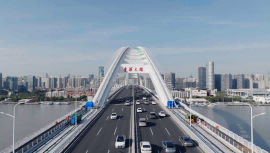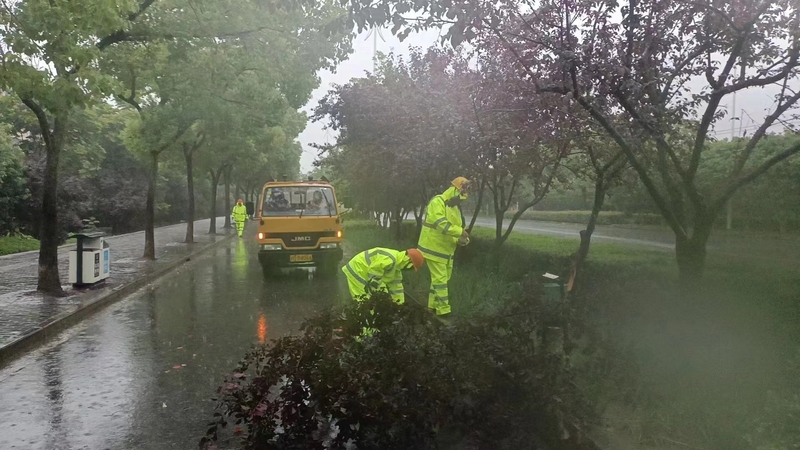Shanghai ranks 5th in the world! What are the characteristics of these enterprises?, The latest Fortune Global 500 list is revealed in the United States | Technology | Enterprises
On August 2nd, Fortune magazine released the latest list of Fortune Global 500 companies. According to the 2022 financial reports of global enterprises, a total of 142 Chinese companies have been shortlisted for the Fortune Global 500. Among them, there are a total of 12 companies headquartered in Shanghai, making Shanghai the fifth city with the highest number of companies on the global list, only behind Beijing, Tokyo, New York, and Seoul.
This year, the number of Shanghai based companies that were shortlisted for the Fortune Global 500 remained the same as last year, but many companies experienced a decline in their global rankings. Setting aside external factors, how to achieve the transformation of old and new driving forces, and the high-quality transformation and development of the economy remains the focus of Shanghai's efforts to build a world-class enterprise in the next stage.
The overall stable operation of the shortlisted enterprises
In 2022, the Shanghai economy experienced a V-shaped reversal. From the perspective of the number of enterprises and operating data, the overall operation of the Fortune Global 500 companies headquartered in Shanghai remained stable.
Compared to the Fortune Global 500 list released last year, there are still 12 companies headquartered in Shanghai that have been shortlisted this year, the same as last year's list. According to this year's ranking, they are China Baowu, SAIC Group, COSCO Shipping, Bank of Communications, Pacific Insurance, Greenland Holdings, Pudong Development Bank, China Shipbuilding, Suzhou Construction, Shanghai Construction Engineering, Shanghai Pharmaceutical, and Delong Steel.
From the perspective of operating data, the total sales revenue of the 12 companies with headquarters in Shanghai was 838.709 billion US dollars, a slight decrease from last year's 848.831 billion US dollars, and the total profit decreased from 46.559 billion US dollars to 41.593 billion US dollars, indicating a certain degree of contraction in revenue and profit. But the scale of the 12 shortlisted companies continues to expand, with total assets increasing from $4403.583 billion last year to $4417.02 billion. The average asset size of the companies is $368.084 billion, higher than the average level of the Fortune Global 500.
From the ranking, there are two companies headquartered in Shanghai that have been shortlisted as one of the world's top 100 companies, namely China Baowu and SAIC Group. Since entering the Fortune Global 50 for the first time last year, China Baowu has continued to expand its sales revenue scale, ranking 44th this year, which is equivalent to last year. SAIC Group ranks 84th, with a slight decline in ranking, but still maintains the top spot in the national automotive industry, ranking among the top 100 for 10 consecutive years. COSCO Shipping and Shanghai Delong Steel Group have also seen an increase in their rankings this year, rising from 127 and 469 last year to 115 and 451, respectively.
On the other hand, more companies headquartered in Shanghai that have been shortlisted for the Fortune Global 500 have seen a decline in their rankings, with varying degrees of decline across different industries. The real estate and construction industries have seen the largest decline in their rankings. Meanwhile, the entry threshold for companies on this year's Fortune Global 500 list continues to rise. The total sales revenue of the Fortune 500 companies is about 41 trillion US dollars, an increase of 8.4% compared to last year. The entry threshold has also jumped from 28.6 billion US dollars to 30.9 billion US dollars. In addition, external factors such as inflation and exchange rate fluctuations in various countries have led to a relative decline in the ranking of Chinese companies on the list.
Industrial structure limits profitability
Overall, the Fortune Global 500 companies headquartered in Shanghai have a large scale but weak profitability. If according to the statistical caliber of Fortune, the profit of a company is divided by its sales revenue to obtain its rate of return, then among the 12 companies headquartered in Shanghai, only Bank of Communications and Shanghai Pudong Development Bank have a rate of return exceeding 10%, while COSCO Shipping, Pacific Insurance, and China Shipbuilding have a rate of return exceeding 5%. Most other companies have a rate of return ranging from 1% to 2%, with an average rate of return of 4.95% for the 12 companies. The average return rate of Fortune Global 500 companies is 7.1%, and the profitability of companies headquartered in Shanghai still lags far behind the world-class level.
The profitability is largely related to the industrial distribution of these enterprises. From the perspective of Shanghai based companies that were shortlisted for the Fortune Global 500, these companies are not small in size. Among the 12 companies, 9 are state-owned enterprises, including 4 central enterprises and 5 local state-owned enterprises. Most of them are located in traditional industries such as metallurgical materials, engineering manufacturing, automotive, financial banking, and real estate, and none of them are entirely from emerging industries.
Most of these enterprises have played a crucial role in the industrialization and urbanization process of Shanghai, and have also benefited from the rapid growth of the Shanghai economy. However, with the transition of Shanghai's economic development stage and the continuous emergence of new drivers of economic development, these enterprises face the challenge of transformation in terms of their once proud business performance and profitability on the traditional track.

This is also a microcosm of China's large enterprises to a certain extent. China has been listed as one of the 142 Fortune Global 500 companies this year, still ranking first in the world. However, most of the Chinese companies on the list are concentrated in traditional industries, such as energy, materials, engineering construction, industrial manufacturing, and automobiles. There are 68 Chinese companies, more than half of the Chinese companies on the list. However, there are only 25 companies listed in these five traditional industries in the United States.
Developing high-tech industries is the key to improving the overall profitability of regional enterprises. According to statistics from Fortune, in China, the average return rate of high-tech enterprises is as high as 11.6%, making it the second highest return rate in the field, second only to financial enterprises at 12.2%. From a global perspective, there are 5 high-tech enterprises in China and 15 in the United States.
Wang Zhile, a special author of Fortune magazine, said, "The large scale and good efficiency of high-tech enterprises have greatly improved the quality of operations of American companies on the list. High tech fields such as computers, semiconductors, and software are the focus of global competition. The gap between Chinese and American companies on the list tells us that Chinese companies still need to continue to work hard in these high-tech fields."
High quality transformation and development remain the focus
Chinese and Shanghai enterprises need to strive for world-class status, and their large quantity and scale are not enough. They also need strong competitiveness.
This requires Shanghai to take early action in emerging and strategic industries, make a layout, and cultivate high growth enterprises. On the other hand, large industrial enterprises in traditional industries also need to actively transform, embrace challenges with a proactive attitude, turn crises into opportunities, and drive their high-quality development with intelligence, greenness, and digitization.
The good news is that after years of effort, Shanghai has initially established a new industrial system of "3+6", and a number of iconic industrial chains have been basically formed. At the same time, the development goal of a modern industrial system of "2++" has also been clarified. In the "Three Year Action Plan for Promoting High Quality Development of Manufacturing Industry in Shanghai" released in early June this year, there were not only planning and design for leading industries, new tracks, and future industries, but also cultivation plans for technology-based enterprises and specialized and innovative enterprises. At the same time, there were plans for upgrading and transforming traditional manufacturing industries and efficiently utilizing traditional industrial land, reflecting Shanghai's determination to promote high-quality economic development.
A group of companies on the list are also taking action. In March of this year, Baosteel Group, a subsidiary of Baosteel Group, announced the official completion and operation of the non oriented silicon steel product structure optimization project. This is the world's first high-level non oriented silicon steel professional production line that is fully oriented towards the new energy vehicle industry. It will provide 500000 tons of top grade non oriented silicon steel products to new energy vehicle users every year, marking a leapfrog development of Baosteel's high-end, green, and intelligent non oriented silicon steel. Silicon steel represents the highest level of steel manufacturing and is known as the "pearl on the crown" of steel products. Currently, Baosteel Group is the world's largest supplier of silicon steel.
Not long ago, one of the oldest factories in the Shanghai automotive industry, SAIC Volkswagen Anting Plant 1, officially closed, attracting widespread attention. Anting Factory carries the history of Shanghai's automotive industry's takeoff, with an early start and complete supporting facilities. However, it gradually lags behind in the development of the times and space tends to be saturated. Since 2017, SAIC Volkswagen has been implementing transformation and upgrading of the Anting base. In order to further keep up with the trend of electrification transformation in the domestic market, SAIC Volkswagen has decided to close Anting Plant 1, gradually transfer production capacity and employees to the newly built MEB new energy vehicle factory, and accelerate the electrification transformation of the Anting base.
Although such cases of enterprise transformation and upgrading require enormous efforts, varying degrees of transformation will inevitably demonstrate different results in the future.




